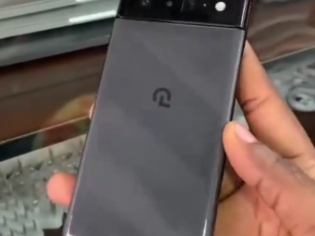-
Rohan Parekh
09th Nov 2021
With the release of Google's Pixel 6, a new and affordable contender has entered the market. This move, of course, puts iPhone 13, newly released, on the spot. With the two phones representing Android 12 and iOS 15, both hardware and software battle.
Here are some of the points worthy of comparison between the two latest smartphones.
Price and availability
The Pixel 6 was released on October 28, and prices started from £599 for the 128GB model. The 256GB model costs approximately AU$1,129. iPhone 13 was launched on September 24, 2021, with prices ranging from $799 for 128GB, $899 for 256GB, and $1099 for the 512GB model.
You can see the stark difference in pricing for the two models, but iPhone 13 does offer more range to the users.
Design
Pixel 6 is significantly larger than iPhone 13, with its dimensions of 158.6 x 74.8 x 8.9 mm, while the Apple product is only 146.7 x 71.5 x 7.65 mm in size. The phone also weighs only 174g compared to Google's 207g Pixel 6.
Considering its non-pro status, it would not be wrong to say that Pixel 6 is quite heavy. Moreover, its camera module adds to the weight of this device.
However, considering the design, Google's phone does feel more original with its two-tone finish and prominent camera module running across the entire width of the device. However, it may make the camera just a little bit extra vulnerable to damage.
With its lack of symmetry in camera positioning, iPhone 13 feels a little unsteady when sitting on a table.
While Apple's latest release may be pleasing to the eye, it does not bring much newness to the table compared to iPhone 12. The only difference is that the display notch is 20% smaller, but Pixel 6's central hole punch notch is even smaller. One setback for Pixel 6 is using the traditional fingerprint sensor, whereas iPhone 13 opts for the Face ID.
Both phones come with IP68 dust and water resistance rating. In addition, Pixel 6 has a Gorilla Glass Victus display cover, while iPhone 13 opts for a nano-crystalline Ceramic Shield.
Both devices have an equally strong stereo sound.
Display
Pixel 6 offers a 6.4-inch OLED display with a 2400 x 1080 resolution. Although it is larger, it is less sharp than iPhone 13's 6.1-inch Super Retina XDR OLED screen, with 2532 x 1170 resolution.
However, the Pixel 6 manages to beat Apple with its fluidity. The phone has a 90Hz refresh rate, nearly 50% faster than iPhone 13's 60Hz. Where it falls short here, iPhone 13 makes up for it in the iPhone 13 Pro, with its 120Hz refresh rate.
Pixel 6 screen also has a more vibrant mix of colours, whereas iPhone 13 opts for stronger contrasts. The brightness offered by the screen is yet to be determined. iPhone 13 provides 800 nits in typical conditions and 1200 nits in HDR content.
Cameras
While both phones have improved their dual-camera systems, they are hardly identical in their changes.
Google has opted for a substantial 1/1.31-inch 50MP wide sensor with an f/1.85 aperture. This sensor produces 1.2μm pixels but can capture larger pixels for its 12.5MP images. As a result, the picture quality of Pixel 6 is much better than last year's iPhone 12 Pro, which is quite similar to iPhone 13's camera. However, Apple has also upped its game with iPhone 13, with a 12MP wide sensor, 1.7µm pixels, accompanied by a wide-open f/1.6 aperture.
While Pixel 6 has an f/2.2 aperture, iPhone 13 goes with an f/2.4 aperture.
Google and Apple are well-known for their image processing software, which often does more heavy lifting than even the hardware.
Pixel 6 offers the new Motion mode, with Action Pan and Long Exposure, which works well for capturing still objects with motion and blurring light trails, respectively. On the other hand, Apple comes with Photographic Styles, where you can change the fundamental tone without using any cheap filters.
When it comes to videos, though, Google is slightly ahead in the race. While both devices record 4K video at 60fps, Google has introduced its AI smarts and the Tensor chip. With this feature, live HDR+ can be captured with enhanced colours and tones, and Speech Enhancement can isolate voices from the background noise.
This fact does not mean that Apple hasn't pulled in its weight. For example, with 'Cinematic mode', you can change the focus in a scene, even after the video has been shot.
Specs and performance
Google claims that its Tensor is contemporary with big rivals such as Qualcomm's Snapdragon 888 for raw performance. However, this may not be entirely true. iPhone 13, with its A15 Bionic, opts for the traditional metrics.
Apple's chip is incredibly fast, with Geekbench 5 multi-core scores, with an average score of 4688, while Pixel 6's stands at only 2837.
Of course, it isn't all about the raw CPU and GPU power. Google's Tensor chip comes with excellent camera tricks, setting it apart from iPhone 13. It is also excellent at running practical tasks such as apps, multitasking, web browsing, and gaming.
Pixel 6 comes with 8GB RAM, while iPhone 13 has only 4GB. In addition, Pixel 6 offers two storage variants, 128GB and 256GB. iPhone 13 comes with 128GB, 256GB, and 512GB across the world.
Software
The critical difference between Pixel 6 and iPhone 13 comes down to its software. Pixel 6 runs Android 12, while iPhone 13 runs iOS 15, the two most extensive and only mobile operating systems.
Google's Android 12 does steal the show away with a bright new Material You UI. However, this does not mean that iOS 15 is bad or dull. However, it just feels like an upgrade of existing software.
Over the years, both systems have borrowed certain features to the point where both are almost similar now.
Battery
Google Pixel 6 comes with a 4612mAh battery, while iPhone 13 has a 3240mAh cell. However, this does not determine the phone's stamina in any way since Android and iOS tend to use their resources very differently.
Google promises 48 hours of battery life, but only with its Extreme Battery Saver mode, but you can comfortably get through the entire day with it.
Apple promises an extra 2.5 hours in its battery life compared to iPhone 12. Unfortunately, you usually get left behind with about 20% in your tank after a full day's use.
However, when it comes to charging, there isn't much of an improvement. Both phones do not offer a charger, and their charging speeds have not seen much of an upgrade.
Pixel 6 supports 30W wired charging, while iPhone 13 comes with only 20W. But this is nothing compared to the 65W or 120W standard supported by Oppo and Xiaomi.
On wireless charging, the Pixel 6 supports up to 21W, while iPhone 13 supports up to 15W. But this only works with Google's Pixel Stand, without which it only supports 12W.
Takeaway
Both devices are pretty complete, with affordable prices, excellent dual-camera systems, elegant designs, and fabulous custom processing power.
While iPhone 13 offers superior battery life, the Pixel 6 has a lower price, more fluid display, and a slightly fresher design.
While both these phones are excellent choices, Apple's iPhone 13 does take the lead as a more rounded package.
iPhone 13 mini, iPhone 13 Pro, iPhone 13 Pro Max, Pixel 6, Pixel 6 Pro
Google’s Pixel 6 Vs. Apple’s iPhone 13 | TechTree.com
Google’s Pixel 6 Vs. Apple’s iPhone 13
Let's settle this debate once and for all!
News Corner
- DRIFE Begins Operations in Namma Bengaluru
- Sevenaire launches ‘NEPTUNE’ – 24W Portable Speaker with RGB LED Lights
- Inbase launches ‘Urban Q1 Pro’ TWS Earbuds with Smart Touch control in India
- Airtel announces Rs 6000 cashback on purchase of smartphones from leading brands
- 78% of Indians are saving to spend during the festive season and 72% will splurge on gadgets & electronics
- 5 Tips For Buying A TV This Festive Season
- Facebook launches its largest creator education program in India
- 5 educational tech toys for young and aspiring engineers
- Mid-range smartphones emerge as customer favourites this festive season, reveals Amazon survey
- COLORFUL Launches Onebot M24A1 AIO PC for Professionals







TECHTREE